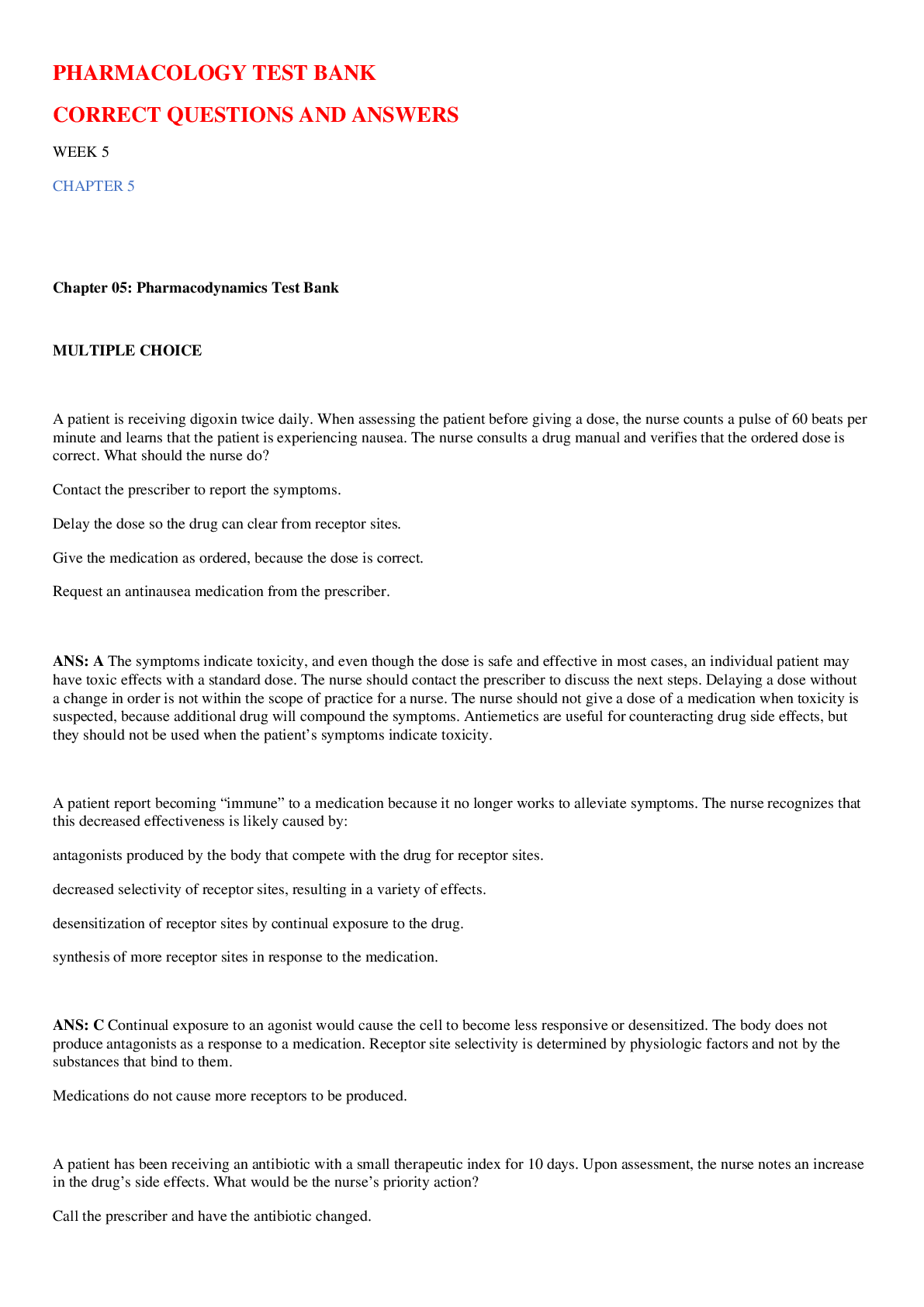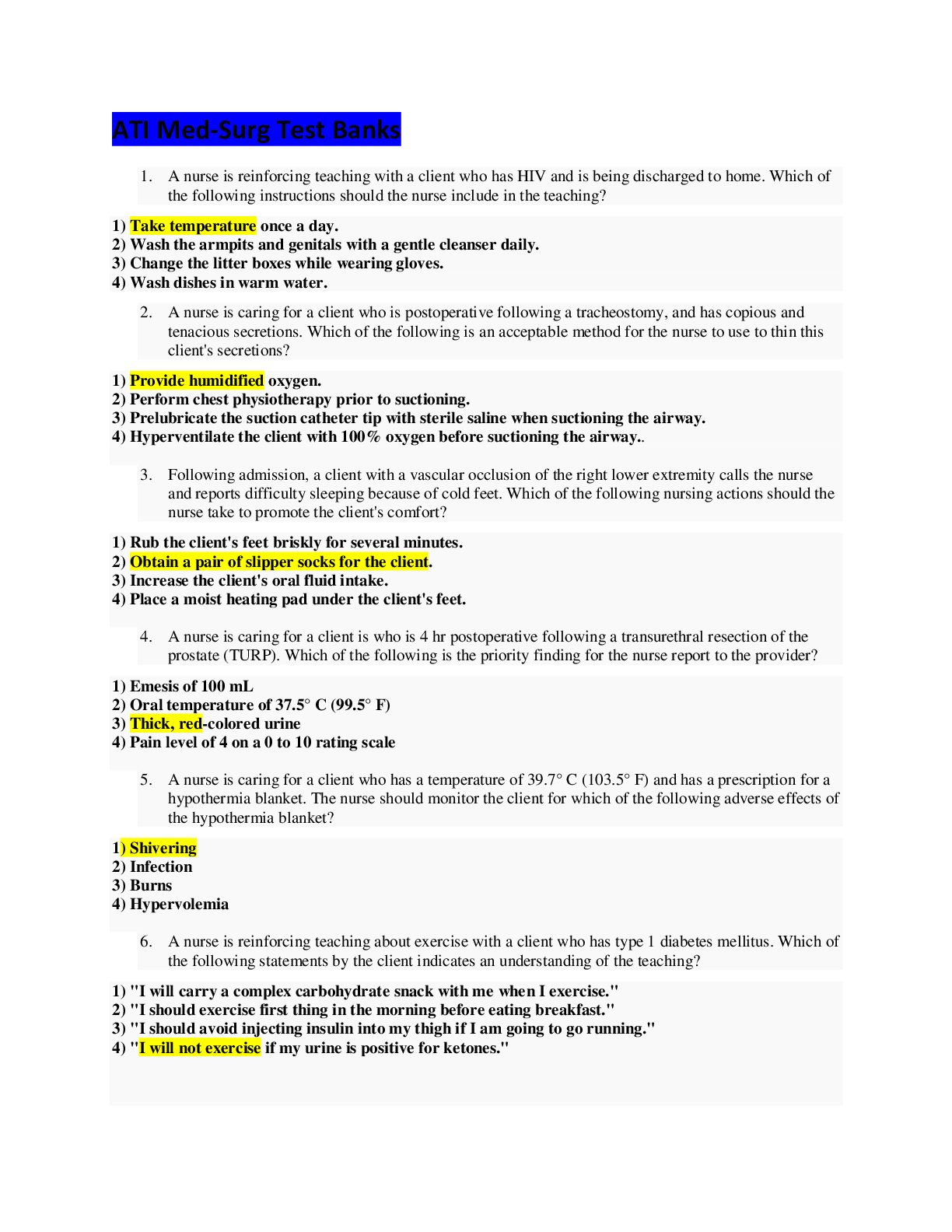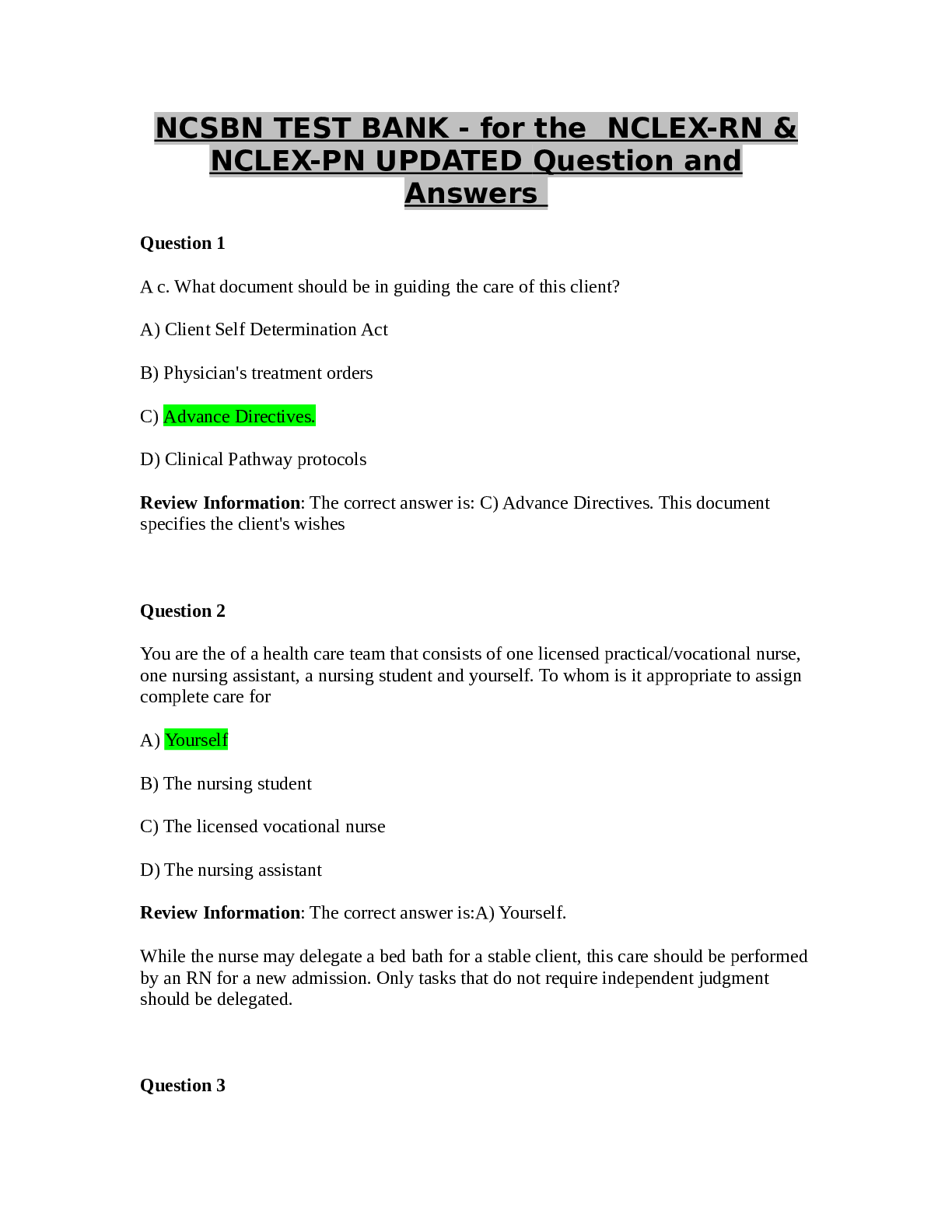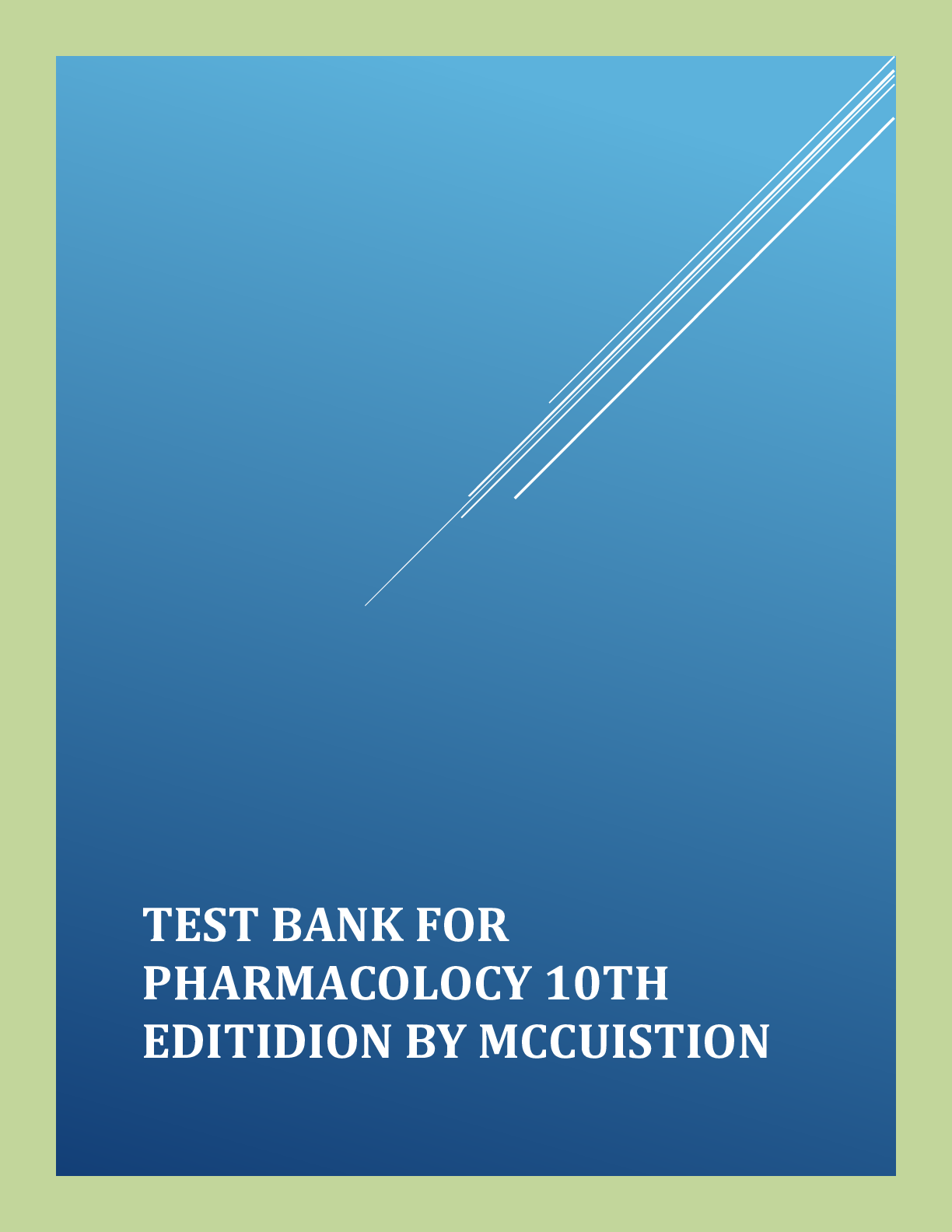Health Care > TEST BANKS > PHARMACOLOGY SECTION TEST BANK QUESTIONS (All)
PHARMACOLOGY SECTION TEST BANK QUESTIONS
Document Content and Description Below
PHARMACOLOGY SECTION TEST BANK QUESTIONS CHAPTER 5 Chapter 05: Pharmacodynamics Test Bank MULTIPLE CHOICE 1. A patient is receiving digoxin twice da... ily. When assessing the patient before giving a dose, the nurse counts a pulse of 60 beats per minute and learns that the patient is experiencing nausea. The nurse consults a drug manual and verifies that the ordered dose is correct. What should the nurse do? a. Contact the prescriber to report the symptoms. b. Delay the dose so the drug can clear from receptor sites. c. Give the medication as ordered, because the dose is correct. d. Request an antinausea medication from the prescriber. ANS: A The symptoms indicate toxicity, and even though the dose is safe and effective in most cases, an individual patient may have toxic effects with a standard dose. The nurse should contact the prescriber to discuss the next steps. Delaying a dose without a change in order is not within the scope of practice for a nurse. The nurse should not give a dose of a medication when toxicity is suspected, because additional drug will compound the symptoms. Antiemetics are useful for counteracting drug side effects, but they should not be used when the patient’s symptoms indicate toxicity. 2. A patient report becoming “immune” to a medication because it no longer works to alleviate symptoms. The nurse recognizes that this decreased effectiveness is likely caused by: a. antagonists produced by the body that compete with the drug for receptor sites. b. decreased selectivity of receptor sites, resulting in a variety of effects. c. desensitization of receptor sites by continual exposure to the drug. d. synthesis of more receptor sites in response to the medication. ANS: C Continual exposure to an agonist would cause the cell to become less responsive or desensitized. The body does not produce antagonists as a response to a medication. Receptor site selectivity is determined by physiologic factors and not by the substances that bind to them. Medications do not cause more receptors to be produced. 3. A patient has been receiving an antibiotic with a small therapeutic index for 10 days. Upon assessment, the nurse notes an increase in the drug’s side effects. What would be the nurse’s priority action? a. Call the prescriber and have the antibiotic changed. b. Suspect an allergic reaction and administer a PRN antihistamine. c. Ask the prescriber to order a plasma drug level test. d. Set up oxygen and obtain an order for an antagonist. [Show More]
Last updated: 2 years ago
Preview 1 out of 39 pages

Buy this document to get the full access instantly
Instant Download Access after purchase
Buy NowInstant download
We Accept:

Reviews( 0 )
$7.00
Can't find what you want? Try our AI powered Search
Document information
Connected school, study & course
About the document
Uploaded On
Dec 09, 2022
Number of pages
39
Written in
Additional information
This document has been written for:
Uploaded
Dec 09, 2022
Downloads
0
Views
76















